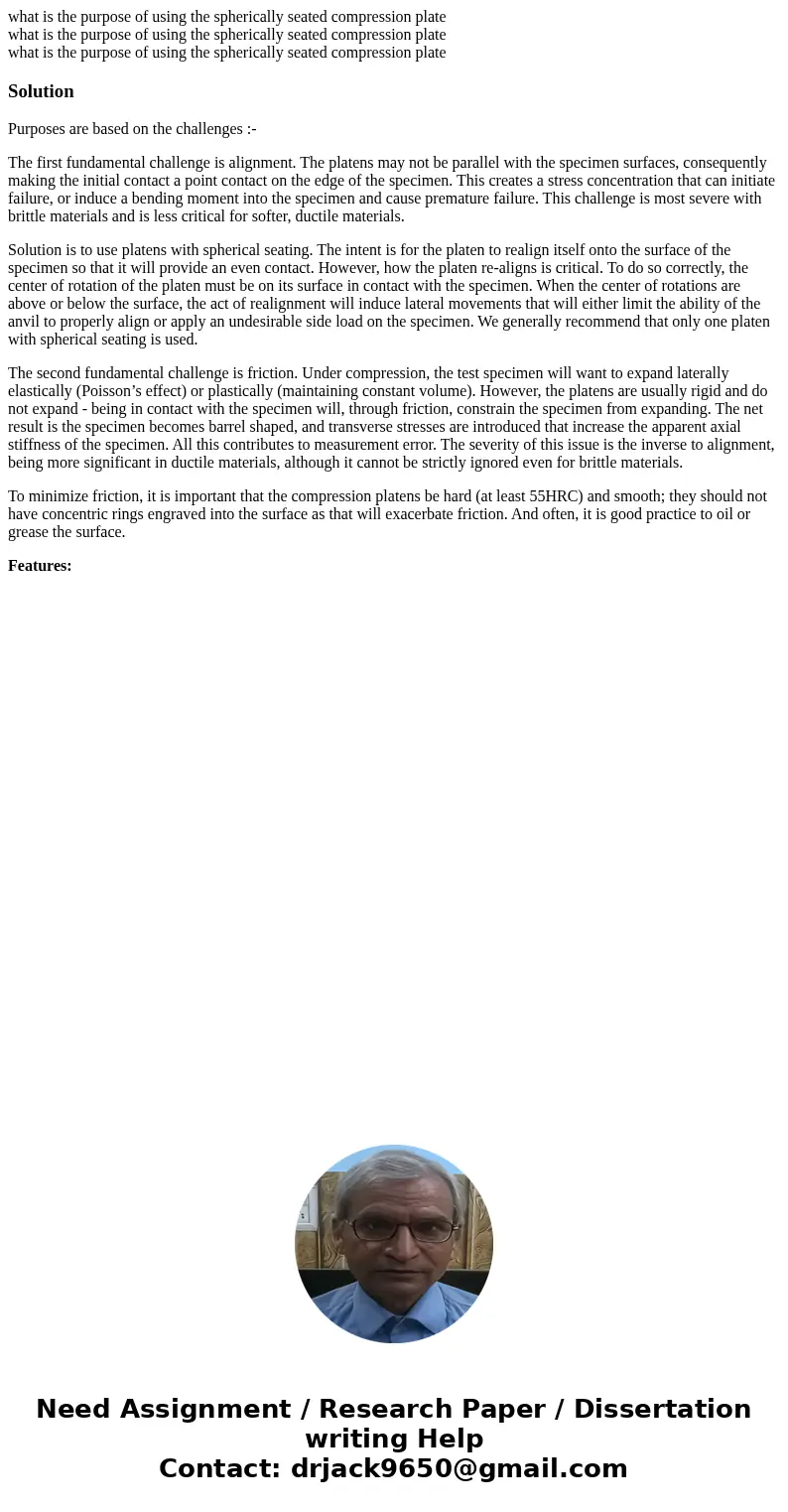what is the purpose of using the spherically seated compress
Solution
Purposes are based on the challenges :-
The first fundamental challenge is alignment. The platens may not be parallel with the specimen surfaces, consequently making the initial contact a point contact on the edge of the specimen. This creates a stress concentration that can initiate failure, or induce a bending moment into the specimen and cause premature failure. This challenge is most severe with brittle materials and is less critical for softer, ductile materials.
Solution is to use platens with spherical seating. The intent is for the platen to realign itself onto the surface of the specimen so that it will provide an even contact. However, how the platen re-aligns is critical. To do so correctly, the center of rotation of the platen must be on its surface in contact with the specimen. When the center of rotations are above or below the surface, the act of realignment will induce lateral movements that will either limit the ability of the anvil to properly align or apply an undesirable side load on the specimen. We generally recommend that only one platen with spherical seating is used.
The second fundamental challenge is friction. Under compression, the test specimen will want to expand laterally elastically (Poisson’s effect) or plastically (maintaining constant volume). However, the platens are usually rigid and do not expand - being in contact with the specimen will, through friction, constrain the specimen from expanding. The net result is the specimen becomes barrel shaped, and transverse stresses are introduced that increase the apparent axial stiffness of the specimen. All this contributes to measurement error. The severity of this issue is the inverse to alignment, being more significant in ductile materials, although it cannot be strictly ignored even for brittle materials.
To minimize friction, it is important that the compression platens be hard (at least 55HRC) and smooth; they should not have concentric rings engraved into the surface as that will exacerbate friction. And often, it is good practice to oil or grease the surface.
Features:

 Homework Sourse
Homework Sourse